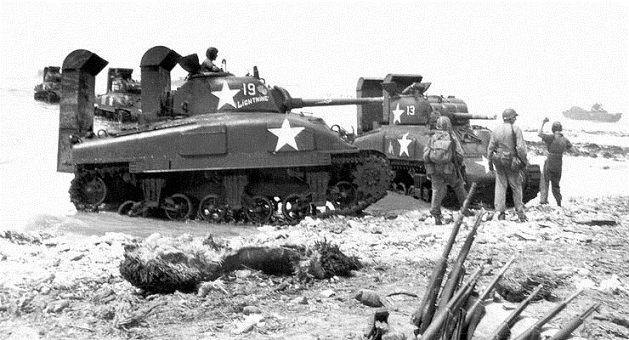78 years ago today, February 1st 1944, Operation Flintlock began. The operation was the capture of the Marshall Islands. The job of capturing Kwajalein fell to the 7th Infantry Division while the 4th Marine Division simultaneously captured Roi and Namur. The 7th had quite the varied experience in WWII, the battle previously was in the snows of Alaska, and now they were on a tropical island. A short and sharp battle it only lasted 3 days start to finish. The smaller near by islands were captured first the day before on January 31st to be used for artillery support and logistic support. The landing had the 184th and 32nd Regimental Combat Teams land abreast of each other at 9:30 am after the final bombardment. In a lesson learned from Tarawa LVT’s were used to support the landings and destroy bunkers. By the end of the first day nearly a quarter of the island was in US hands. Over the next two days the soldiers methodically worked their way down the length of the island until it was completely captured.
Now Let’s Get Geared Up
The typical uniform was the second pattern HBT uniform. Being early in 1944 most appear to be the early lighter green or sage color but the darker OD7 color is present as well. First pattern HBT uniforms are still present as well. Most distinctive is the spider web helmet nets and camo paint. Other types of nets were used but the spider is by far the most common. The majority of soldiers had camouflage paint on their helmets as well. I had planned to paint the helmet but was unable to get enough paint in time. I believe the paint used was vesicant paint (which changes color in the presence of gas) and is a greenish yellow color, but I have not confirmed that yet.

Web gear is minimal as one would expect for such a small battlefield. A cartridge belt, two canteens, an M1924 or M1942 first aid pouch and either a shovel or bayonet. Soldiers seemed to keep the bayonets fixed through out the battle, similar to the marines on Roi-Namur. The bayonets themselves are the new shorter M1 bayonets now as well. The first aid kits seem to be biased to the rear. If the soldier is armed with a carbine then the first aid kit is worn in the middle of the back between the canteen pouches. if armed with a rifle or BAR then I assume they are on the hip. I can’t be 100% as I don’t see them in the photos but I also don’t see any on the front so I have to assume they are just in front of the canteen. As far as canteens go they are a mix of the newer bakelite caps and older aluminum. It appears that the old M1910 or T-handle shovel was still the standard issue for the 7th division.

The M3 gasmask and M6 carrier were a common item seen along with the ubiquitous M1928 haversack. In some of the photos you can see the troops have the M6 bag hung below the M1928. I assume they are doing like the pictured example below and simply just loosed the top straps and hung it over the top of the haversack. Side note did you know that the M1928 can be worn like a backpack and doesn’t have to be connected to a belt?




![Firing an anti-tank gun (37mm), American troops of the 7th Infantry Division begin blasting some Jap[anese] out of a pillbox on Kwajalein Atoll / official U.S. Army photograph. | Library of Congress](https://i0.wp.com/tile.loc.gov/storage-services/service/pnp/cph/3d00000/3d01000/3d01800/3d01889r.jpg)


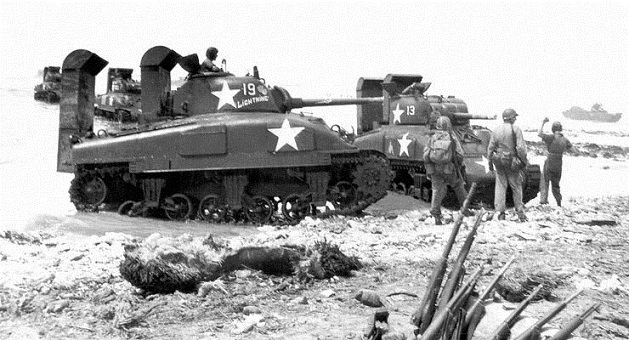






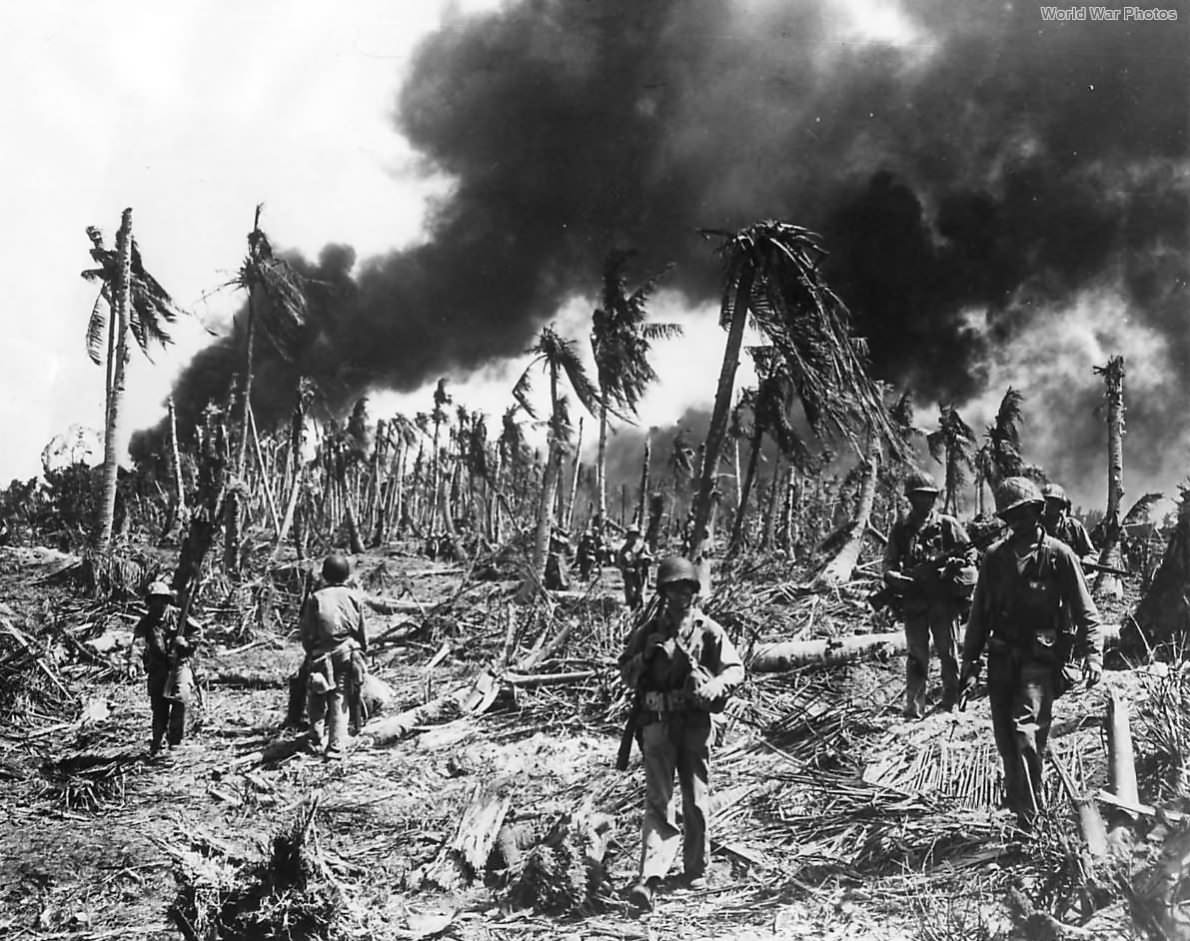
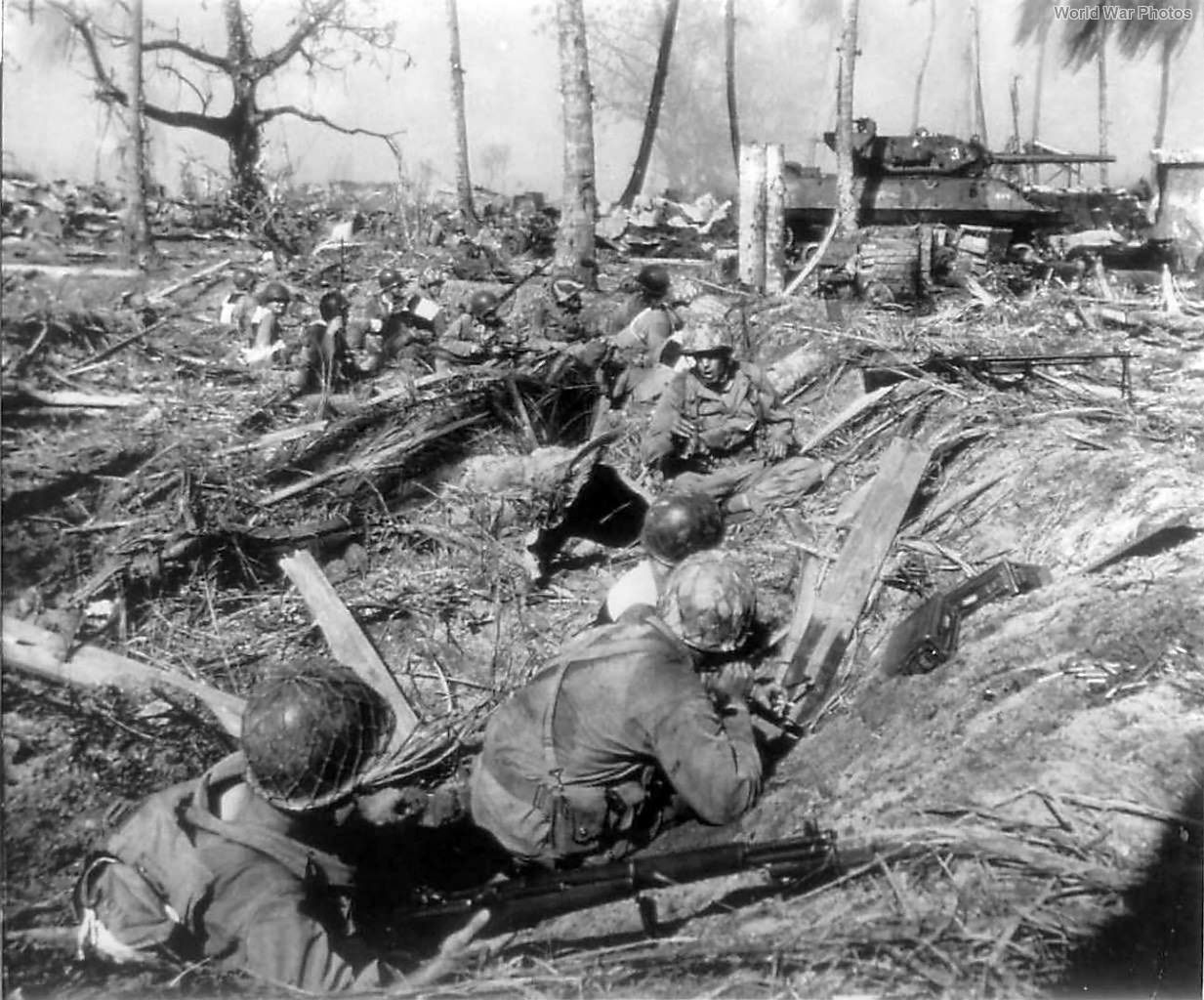

Sources
http://www.historyofwar.org/articles/battles_kwajalein.html
https://www.ibiblio.org/hyperwar/USA/USA-P-Gilberts/index.html
So Foxhole Fashion has already done this and really its a better job that I can do so make sure to go show some support for his work over there too
